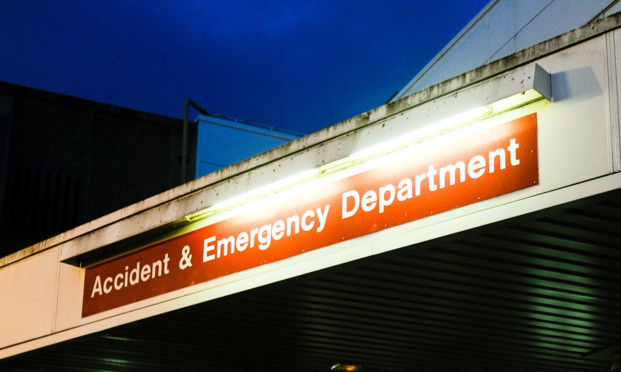Waiting times in accident and emergency departments are not meeting “world leading” Scottish Government targets, with one in 10 people waiting more than four hours to be treated, official figures show.
More than 1.6 million people attended A&E throughout 2014, the highest number of any year on record, and Health Secretary Shona Robison said this winter has seen “unprecedented pressures” in hospitals.
In October and November last year, performance against the four-hour target was 91.8%, while in December it fell to 89.9%.
Across the quarter, 91% of patients were seen at A&E departments within the four-hour target, according to Government figures.
The numbers are below the overall performance in England, but above that in what are described as “core sites” in major cities south of the border.
Scottish Government targets set for departments are for at least 95% of A&E patients to be seen within four hours.
Ms Robison said extra investment has been made in the NHS to improve performance.
The Health Secretary said: “Staff in Scotland’s NHS have done a terrific job over what has been a very challenging time and I’d like to thank them for all their work as they cope with an increase in the number of patients and an increase in those being admitted.
“These factors have clearly impacted on performance and today’s figures do not meet the demanding, world leading targets we have set and the standards that patients rightly demand.
“We are determined to improve performance, which is why we have been taking substantial action to ease pressure on the front door of the hospital, as well as concentrating on the timely discharge of patients.
“We announced this month an investment of £100 million specifically to help health boards and local authorities tackle delayed discharge. This is both good for the patient and frees up beds to help people move out of A&E and through the system.
“This comes on top of our substantial, £50 million investment in an unscheduled care action plan, which has seen increased staffing – particularly amongst emergency department consultants – and ongoing improvement in the system.”
A total of 1,645,200 people attended A&E in 2014, with 393,872 in the last three months of the year. Of that number, around a quarter were admitted to hospital.
In December, 89.9% of patients were seen within four hours in Scotland,compared to 90.2% in England and 81% in Wales.
At “core sites” in the same month, the performance was 88.6% in Scotland, 85.3% in England and 77.2% in Wales.
Theresa Fyffe, Scotland director of the Royal College of Nursing, said: “The longer waiting times at A&E are a symptom of a system that is struggling to cope with the ever-increasing demand it is under, so I’m glad the Scottish Government is taking steps to address this.
“It’s not fair for standards in patient care to suffer because the right staff and resources are not in place. This means surgery ends up being cancelled, people are admitted to the wrong ward due to a lack of beds, or end up in hospital unnecessarily because of a lack of health and social care at home or in the community.
“Nurses and the rest of the team working in our NHS are working extremely hard under great pressure, so it is imperative now that effective action is taken by the Scottish Government and health boards – alongside partners in local government and the third sector – to put the NHS and social care on a sustainable footing that meets the needs of the people they serve.
“Otherwise nurses and their colleagues will become more and more overburdened and patient care will continue to suffer.”
